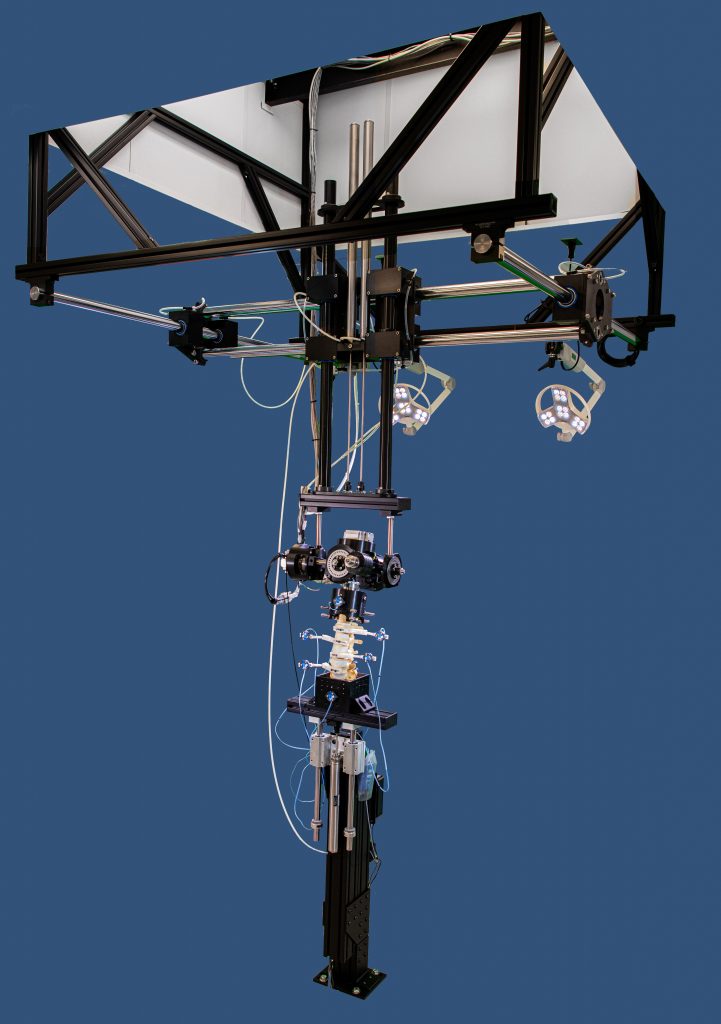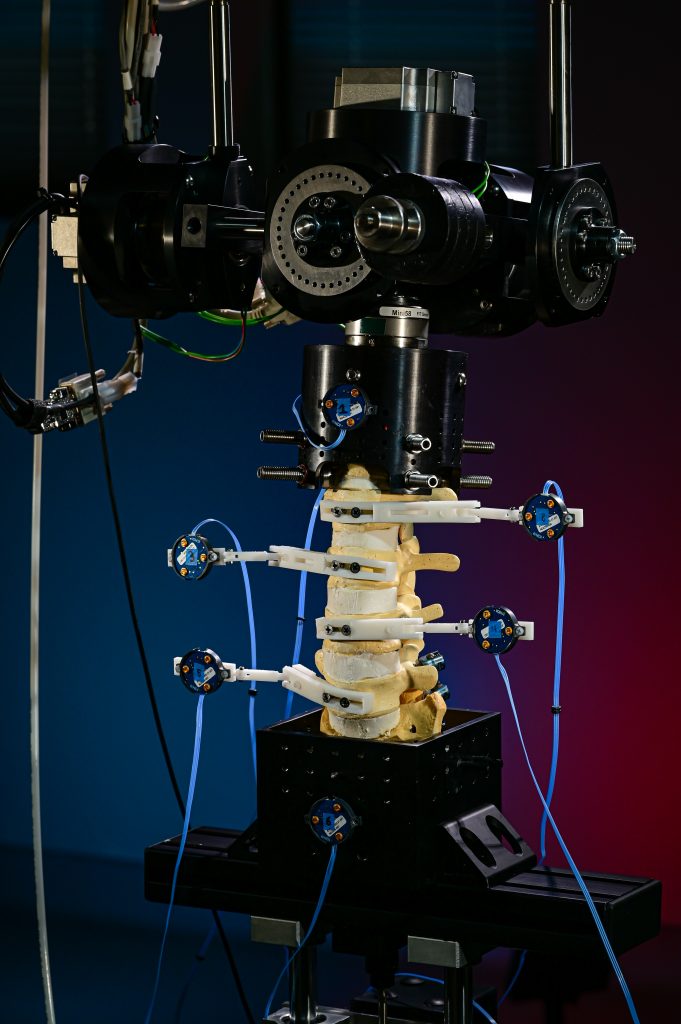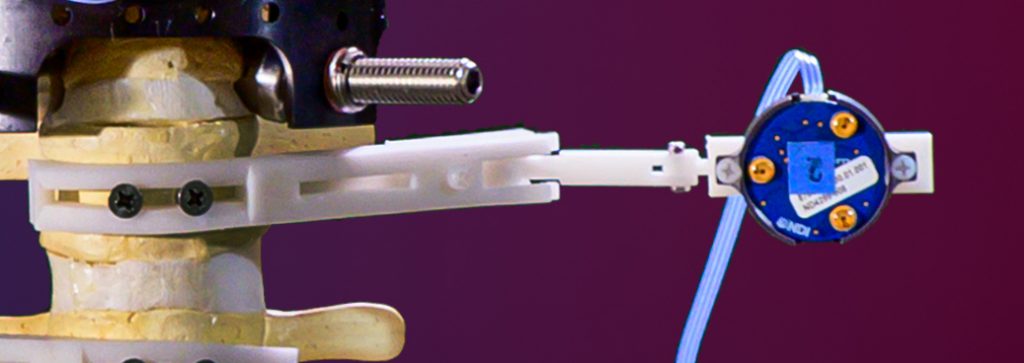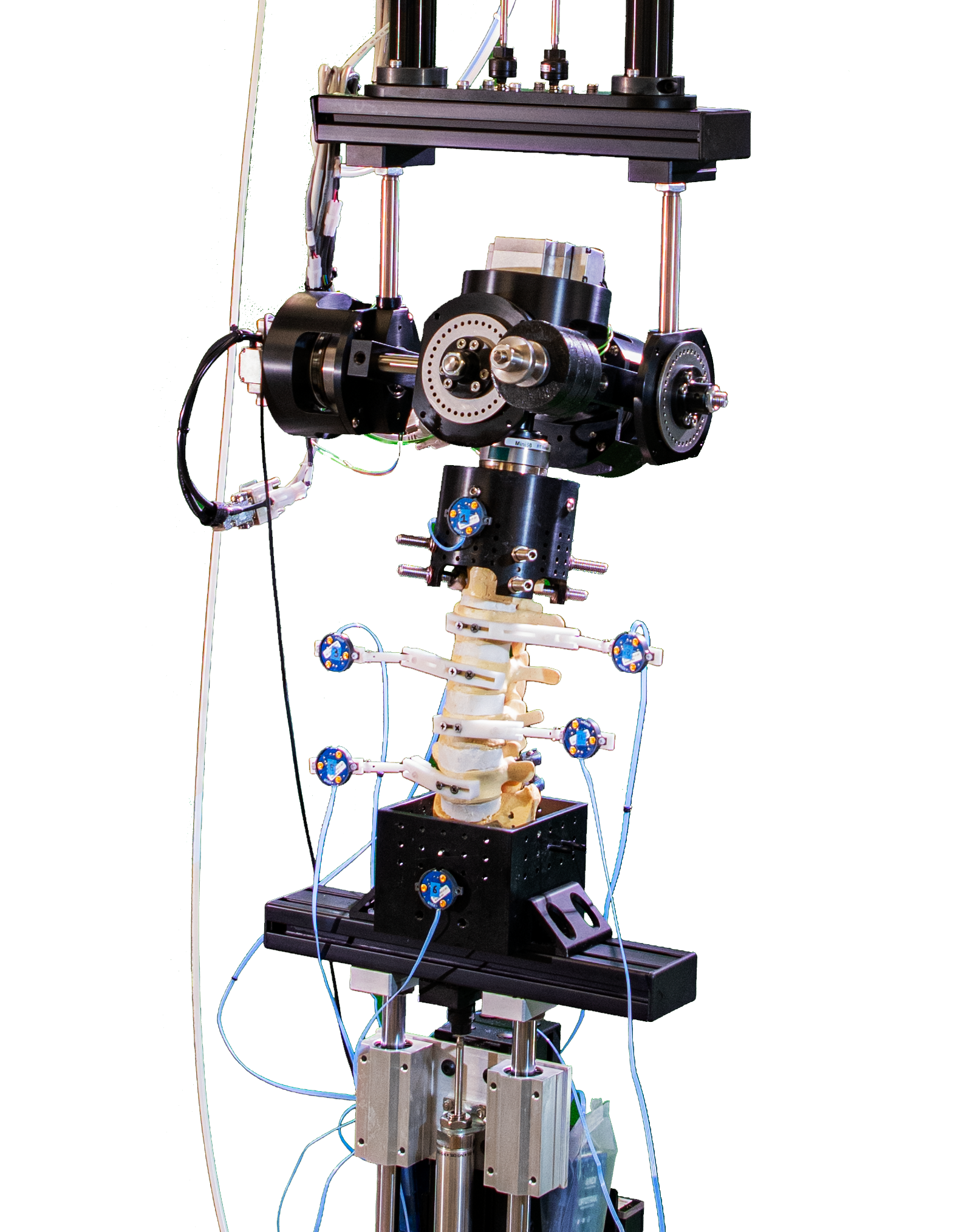The 6 Degrees of Freedom Spine Simulator is the centerpiece of the biomechanics testing laboratory. Reproducing normal spinal kinematics during testing is crucial for accurate, reproducible results. The image to the right is the fifth iteration of a platform designed by Dr. Bryan Cunninham, Ph.D., and mechanical engineer Jeff Gordon, M.S.

Applying a load to the spine causes unencumbered translations in the x and z axes, made possible by sophisticated air bearings in the top of the structure. Y axis translation is accomplished by the use of a vertical air bearing zeroed to the weight of the spine and testing fixture. The resultant free motion insures highly accurate testing results.
The six degree of freedom spine simulator can produce up to 64 Nm of flexion/extension, lateral bending, and/or axial rotation torques. Each of the three axes – X, Y and Z – is controlled independently to induce a torque profile, to lock, or to operate on bearings – allowing inherently coupled rotational spinal motions to occur unconstrained. Translations in all three axes – X, Y and Z – can be unconstrained or locked if required. This technology combined with advanced histological and radiographic laboratories permit basic scientific research in new areas such as dynamic spinal stabilization, which is intended to preserve spinal mobility versus traditional methods of spinal fusion.
The simulator also allows application of a follower load to simulate body weight and trunk loads. Segmental motion tracking is performed using an optoelectronic system (Optotrak, Northern Digital) which can record rotations to within 0.1 degree and translations to within 0.1 mm .

Optotrak’s optoelectric markers send 1000 data points per marker per second, during range of motion spine testing. Three markers on each rigid body allow the system to calculate the exact position of each rigid body in three-dimensional space, with an accuracy of 0.1mm. The data acquired is then analyzed, and motion at each individual vertebral segment is quantified.

Multiple reconstructions can be performed directly on the 6DOF spine simulator, negating the need for time consuming setups between testing conditions.
Video of the 6 Degrees of Freedom Spine Simulator During Range of Motion Testing.
Speed of video has been increased and limited to 1 testing cycle.

